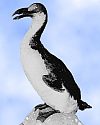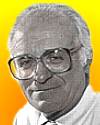
Born 7 Jun 1928.
Bernard Flood Burke is an American astronomer who co-discovered that the giant planet Jupiter emits radio waves (1955). Burke and Kenneth L. Franklin, astronomers at the Carnegie Institution in Washington, were scanning the sky for radio waves from galaxies. By chance, they found a radio signal that resembled short bursts of static, similar to interference by lightning on home radios. After weeks of study, finding the signals were periodic, four minutes earlier each day, they pin-pointed Jupiter as the source. Never before had radio sounds from a planet in our solar system been detected. Later study showed the radio waves were circularly polarized, so a magnetic field was involved. They announced the discovery on 6 Apr 1955.«
Bernard Flood Burke is an American astronomer who co-discovered that the giant planet Jupiter emits radio waves (1955). Burke and Kenneth L. Franklin, astronomers at the Carnegie Institution in Washington, were scanning the sky for radio waves from galaxies. By chance, they found a radio signal that resembled short bursts of static, similar to interference by lightning on home radios. After weeks of study, finding the signals were periodic, four minutes earlier each day, they pin-pointed Jupiter as the source. Never before had radio sounds from a planet in our solar system been detected. Later study showed the radio waves were circularly polarized, so a magnetic field was involved. They announced the discovery on 6 Apr 1955.«
An Introduction to Radio Astronomy, by Bernard F. Burke and Francis Graham-Smith. - book suggestion.
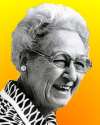
(EB)
Born 7 Jun 1909; died 7 Aug 1974 at age 65.
American physician, anesthesiologist and medical researcher who developed the Apgar Score System, a method of evaluating an infant shortly after birth to assess its well-being and to determine if any immediate medical intervention is required.
American physician, anesthesiologist and medical researcher who developed the Apgar Score System, a method of evaluating an infant shortly after birth to assess its well-being and to determine if any immediate medical intervention is required.
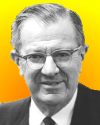
Born 7 Jun 1900; died 19 Dec 1982 at age 82.
American electrical engineer whose research during WW II produced valuable radar countermeasures for the allied forces. He directed the Radio Research Laboratory at Harvard University formed for the purpose of inventing jammers of enemy radar, which included active radio transmitters, passive chaff (aluminium strips to mask targets by producing invalid reflections to enemy radar), and tunable receivers to detect radar signals. Terman also had responsibility for advising industrial contractors (such as RCA, GE, and Western Electric) concerning their manufacture. The radio electronics textbooks were popular because of his clarity. After the war, Terman worked on the design of long-distance electrical transmission and resonant transmission lines.«
American electrical engineer whose research during WW II produced valuable radar countermeasures for the allied forces. He directed the Radio Research Laboratory at Harvard University formed for the purpose of inventing jammers of enemy radar, which included active radio transmitters, passive chaff (aluminium strips to mask targets by producing invalid reflections to enemy radar), and tunable receivers to detect radar signals. Terman also had responsibility for advising industrial contractors (such as RCA, GE, and Western Electric) concerning their manufacture. The radio electronics textbooks were popular because of his clarity. After the war, Terman worked on the design of long-distance electrical transmission and resonant transmission lines.«
Fred Terman at Stanford: Building a Discipline, a University, and Silicon Valley, by C. Stewart Gillmor. - book suggestion.
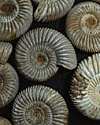
Born 7 Jun 1896; died 10 Jun 1971 at age 75.
German paleontologist, known for his research on corals and cephalopods. He was an anti-Darwinist, who advocated a cataclysmic theory of evolution to explain the origin of the higher taxonomic categories. Studying different fossil species of coral and ammonites obtained from sequential geological strata, he concluded that the most recent taxonomic categories could not have arisen by slow, intermediate steps, generally thought to characterize evolution, but rather by large, single transformations. Though his views are not accepted by many biologists, particularly the population geneticists, who consider them too controversial, he has drawn attention to fundamental problems in evolution.
German paleontologist, known for his research on corals and cephalopods. He was an anti-Darwinist, who advocated a cataclysmic theory of evolution to explain the origin of the higher taxonomic categories. Studying different fossil species of coral and ammonites obtained from sequential geological strata, he concluded that the most recent taxonomic categories could not have arisen by slow, intermediate steps, generally thought to characterize evolution, but rather by large, single transformations. Though his views are not accepted by many biologists, particularly the population geneticists, who consider them too controversial, he has drawn attention to fundamental problems in evolution.
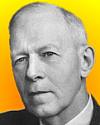
Born 7 Jun 1896; died 31 Oct 1986 at age 90. quotes
American chemist and physicist who received the 1966 Nobel Prize for Chemistry for “fundamental work concerning chemical bonds and the electronic structure of molecules.” In 1922, he first suggested a method of isotope separation by evaporative centrifuging. Thereafter, most of his research career was concerned with the interpretation of molecular spectra and with the application of quantum theory to the electronic states of molecules. With Friedrich Hund, he developed the molecular-orbital theory of chemical bonding, based on the idea that atomic orbitals of isolated atoms become molecular orbitals, extending over two or more atoms in the molecule. He also made major contributions to the theory and interpretation of molecular spectra.
American chemist and physicist who received the 1966 Nobel Prize for Chemistry for “fundamental work concerning chemical bonds and the electronic structure of molecules.” In 1922, he first suggested a method of isotope separation by evaporative centrifuging. Thereafter, most of his research career was concerned with the interpretation of molecular spectra and with the application of quantum theory to the electronic states of molecules. With Friedrich Hund, he developed the molecular-orbital theory of chemical bonding, based on the idea that atomic orbitals of isolated atoms become molecular orbitals, extending over two or more atoms in the molecule. He also made major contributions to the theory and interpretation of molecular spectra.
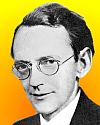
Born 7 Jun 1890; died 7 Aug 1958 at age 68.
Karl Spencer Lashley was an American psychologist who conducted quantitative investigations of the relation between brain mass and learning ability. He collaborated with Shepherd J. Franz in the study of intelligence and the role of the frontal lobes. Lashley promulgated the theory of cortical specialization for sensory and motor functions. He challenged the ongoing concept of cortical localization. The controversy between localization and holistic emphasis of brain function was brought into focus by Lashley. He is remembered as a great psychologist who approached learning and memory by assessing the effects of brain damage in laboratory animals.
Karl Spencer Lashley was an American psychologist who conducted quantitative investigations of the relation between brain mass and learning ability. He collaborated with Shepherd J. Franz in the study of intelligence and the role of the frontal lobes. Lashley promulgated the theory of cortical specialization for sensory and motor functions. He challenged the ongoing concept of cortical localization. The controversy between localization and holistic emphasis of brain function was brought into focus by Lashley. He is remembered as a great psychologist who approached learning and memory by assessing the effects of brain damage in laboratory animals.
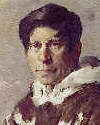
Born 7 Jun 1879; died 21 Dec 1933 at age 54.
Danish-Eskimo explorer and ethnologist, who was an expert on the folklore and history of the Greenland Eskimos. In 1912, his first expedition covered 500 miles by dogsled (using more than fifty dogs) across Greenland's ice cap. On this, and seven more expeditions up to 1920, he studied and mapped the geography of northern Greenland, carried out scientific investigations of the ice cap. By spending a few weeks with various tribes, he studied the Eskimo cultures. Rasmussen investigated the theory that the Inuit and the North American Indians were both descended from migratory tribes from Asia, for his own travels showed that using only traditional Inuit technology it was possible to cover the entire distance using only one dog team.«
Danish-Eskimo explorer and ethnologist, who was an expert on the folklore and history of the Greenland Eskimos. In 1912, his first expedition covered 500 miles by dogsled (using more than fifty dogs) across Greenland's ice cap. On this, and seven more expeditions up to 1920, he studied and mapped the geography of northern Greenland, carried out scientific investigations of the ice cap. By spending a few weeks with various tribes, he studied the Eskimo cultures. Rasmussen investigated the theory that the Inuit and the North American Indians were both descended from migratory tribes from Asia, for his own travels showed that using only traditional Inuit technology it was possible to cover the entire distance using only one dog team.«
Across Arctic America: Narrative of the Fifth Thule Expedition, by Knud Rasmussen, et al. - book suggestion.
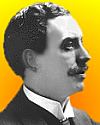
Born 7 Jun 1877; died 23 Oct 1944 at age 67.
Charles Glover Barkla was an English physicist who was awarded the Nobel Prize for Physics in 1917 for his work on X-ray scattering. This technique is applied to the investigation of atomic structures, by studying how X-rays passing through a material and are deflected by the atomic electrons. In 1903, he showed that the scattering of x-rays by gases depends on the molecular weight of the gas. His experiments on the polarization of x-rays (1904) and the direction of scattering of a beam of x-rays (1907) showed X-rays to be electromagnetic radiation like light (whereas, at the time, William Henry Bragg who held that X-rays were particles.) Barkla further discovered that each element has its own characteristic x-ray spectrum.«
Charles Glover Barkla was an English physicist who was awarded the Nobel Prize for Physics in 1917 for his work on X-ray scattering. This technique is applied to the investigation of atomic structures, by studying how X-rays passing through a material and are deflected by the atomic electrons. In 1903, he showed that the scattering of x-rays by gases depends on the molecular weight of the gas. His experiments on the polarization of x-rays (1904) and the direction of scattering of a beam of x-rays (1907) showed X-rays to be electromagnetic radiation like light (whereas, at the time, William Henry Bragg who held that X-rays were particles.) Barkla further discovered that each element has its own characteristic x-ray spectrum.«
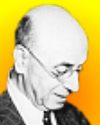
Born 7 Jun 1873; died 11 Jul 1948 at age 75. quotes
German anatomist and physical anthropologist whose reconstruction of prehistoric human remains and work on Peking man (then called Sinanthropus pekinensis) and other hominids brought him to preeminence in the study of human evolution. A Jew, Weidenreich fled Nazi Germany to take a position in Beijing. He worked with Teilhard de Chardin on the Zhoukoudian fossils (at the Cave of Peking Man), next fleeing the Japanese during WW II. His "multiregional" hypothesis of human origins (i.e., that human racial lineages date back to the early Pleistocene) became influential and is still widely debated, but at first it was misinterpreted as arguing that there was no genetic continuity between human races.
German anatomist and physical anthropologist whose reconstruction of prehistoric human remains and work on Peking man (then called Sinanthropus pekinensis) and other hominids brought him to preeminence in the study of human evolution. A Jew, Weidenreich fled Nazi Germany to take a position in Beijing. He worked with Teilhard de Chardin on the Zhoukoudian fossils (at the Cave of Peking Man), next fleeing the Japanese during WW II. His "multiregional" hypothesis of human origins (i.e., that human racial lineages date back to the early Pleistocene) became influential and is still widely debated, but at first it was misinterpreted as arguing that there was no genetic continuity between human races.
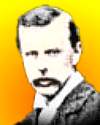
Born 7 Jun 1868; died 16 Feb 1957 at age 88.
British physicist who pioneered in the study of electrical conduction in gases. In 1898 he made the first direct measurement of the unit electrical charge (e). As a postgraduate, he was a research student of J. J. Thomson. In 1897, Townsend developed the falling-drop method for measuring e, using saturated clouds of charged water droplets (extended by Robert Millikan's highly accurate oil-drop method). He was first to explain how electric discharges pass through gases (Electricity in Gases, 1915) whereby motion of electrons in an electric field releases more electrons by collision. These in turn collide releasing even more electrons in a multiplication of charges known as an avalanche.
British physicist who pioneered in the study of electrical conduction in gases. In 1898 he made the first direct measurement of the unit electrical charge (e). As a postgraduate, he was a research student of J. J. Thomson. In 1897, Townsend developed the falling-drop method for measuring e, using saturated clouds of charged water droplets (extended by Robert Millikan's highly accurate oil-drop method). He was first to explain how electric discharges pass through gases (Electricity in Gases, 1915) whereby motion of electrons in an electric field releases more electrons by collision. These in turn collide releasing even more electrons in a multiplication of charges known as an avalanche.
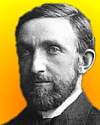
Born 7 Jun 1862; died 20 May 1947 at age 84. quotes
Philipp Eduard Anton von Lenard was a Hungarian-German physicist who received the 1905 Nobel Prize for Physics for his research on cathode rays. He discovered they could leave a cathode ray tube, penetrate thin metal sheets, and travel a short distance in the air, which would become conducting.. In 1902, he observed that a free electron (as in a cathode ray) must have at least a certain energy to ionize a gas by knocking a bound electron out of an atom. His estimate of the required ionization energy for hydrogen was remarkably accurate. Also in 1902, he showed that the photoelectric effect produces the same electrons found in cathode rays, that the photoelectrons are not merely dislodged from the metal surface but ejected with a certain amount of energy.
Philipp Eduard Anton von Lenard was a Hungarian-German physicist who received the 1905 Nobel Prize for Physics for his research on cathode rays. He discovered they could leave a cathode ray tube, penetrate thin metal sheets, and travel a short distance in the air, which would become conducting.. In 1902, he observed that a free electron (as in a cathode ray) must have at least a certain energy to ionize a gas by knocking a bound electron out of an atom. His estimate of the required ionization energy for hydrogen was remarkably accurate. Also in 1902, he showed that the photoelectric effect produces the same electrons found in cathode rays, that the photoelectrons are not merely dislodged from the metal surface but ejected with a certain amount of energy.
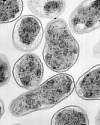
Brucella
Born 7 Jun 1848; died 22 Jun 1932 at age 84.
Danish veterinarian who in 1897 discovered Brucella abortus (Bang's bacillus), the causative agent of contagious abortion in cattle and of brucellosis (undulant fever) in human beings. Bang's teaching, with the introduction of antiseptics, represented a watershed in veterinary surgery. Although long recognized in human medicine, antiseptics had been met with little attention by veterinaries. Bang was instrumental in showing that tuberculosis could be transmitted by cow's milk and in developing isolation techniques. He was the first to use tuberculin, discovered by Robert Koch in 1890, on cattle. He used it diagnostically, rather than therapeutically, as a means for liberating livestock of tuberculosis and to create clean breeding centres.
Danish veterinarian who in 1897 discovered Brucella abortus (Bang's bacillus), the causative agent of contagious abortion in cattle and of brucellosis (undulant fever) in human beings. Bang's teaching, with the introduction of antiseptics, represented a watershed in veterinary surgery. Although long recognized in human medicine, antiseptics had been met with little attention by veterinaries. Bang was instrumental in showing that tuberculosis could be transmitted by cow's milk and in developing isolation techniques. He was the first to use tuberculin, discovered by Robert Koch in 1890, on cattle. He used it diagnostically, rather than therapeutically, as a means for liberating livestock of tuberculosis and to create clean breeding centres.
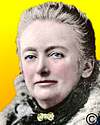
Born 7 Jun 1831; died 15 Apr 1892 at age 60. quotes
Amelia Ann Blanford Edwards was an English novelist, traveller and Egyptologist whose account of her travels in Egypt, A Thousand Miles Up the Nile (1877), was an immediate success. During the last two decades of her life, she became concerned by threats to Egyptian monuments and antiquities, raised funds for archaeological excavations and increased public awareness by lecturing at home and abroad. She also wrote a huge number of popular articles. She establish the Egyptian Exploration Fund (1882). By the 1883 season, the Fund sponsored the young Flinders Petrie who went on to make substantial contributions to Egyptology. Edwards recognized his genius, and provided in her will the endowing of a university chair for him. For this, she chose London's University College (UCL), which was the only school then admitting women. This extended her active work for women's rights. Petrie was made Edwards professor of Egyptology at UCL upon her death in 1892.« more
Amelia Ann Blanford Edwards was an English novelist, traveller and Egyptologist whose account of her travels in Egypt, A Thousand Miles Up the Nile (1877), was an immediate success. During the last two decades of her life, she became concerned by threats to Egyptian monuments and antiquities, raised funds for archaeological excavations and increased public awareness by lecturing at home and abroad. She also wrote a huge number of popular articles. She establish the Egyptian Exploration Fund (1882). By the 1883 season, the Fund sponsored the young Flinders Petrie who went on to make substantial contributions to Egyptology. Edwards recognized his genius, and provided in her will the endowing of a university chair for him. For this, she chose London's University College (UCL), which was the only school then admitting women. This extended her active work for women's rights. Petrie was made Edwards professor of Egyptology at UCL upon her death in 1892.« more
Amelia Edwards: Traveller, Novelist & Egyptologist, by Joan Rees. - book suggestion.
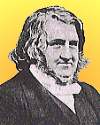
Born 7 Jun 1811; died 6 May 1870 at age 58.
(1st baronet) Scottish inventor and obstertrician who was the the father of modern anesthetics. He employed ether for the first time in Britain, and chloroform ("perchloride of formyle") for the first time as an anesthetic in an operation (1847). He was not the first to use chloroform but it was his persistent roversy about the morality of whether women should use such anesthetics in childbirth. Victoria's leadership broke people free from superstition and fear. Simpson was a natural inventor, always eager to experiment in new directions - the fight against puerperal fever, the invention of new types of forceps and the combating of cholera.
(1st baronet) Scottish inventor and obstertrician who was the the father of modern anesthetics. He employed ether for the first time in Britain, and chloroform ("perchloride of formyle") for the first time as an anesthetic in an operation (1847). He was not the first to use chloroform but it was his persistent roversy about the morality of whether women should use such anesthetics in childbirth. Victoria's leadership broke people free from superstition and fear. Simpson was a natural inventor, always eager to experiment in new directions - the fight against puerperal fever, the invention of new types of forceps and the combating of cholera.
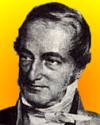
Born 7 Jun 1787; died 12 Aug 1857 at age 70. quotes
William Daniel Conybeare was an English geologist, palaeontologist and clergyman who, published the classic and influential work Outlines of the Geology of England and Wales (1822). This was an enlargement and improvement of an earlier work by William Phillips. In the descriptions, fossils were used to date sedimentary strata, and the stratigraphy was detailed for the British rocks of the Carboniferous Period (280-345 million years ago). Conybeare was one of the first to use geological cross-sections. He described and reconstructed saurian fossils supplied by Mary Anning of Lyme Regis, including the plesiosaur (“almost lizard”), which he regarded as a link between the ichthyosaur and the crocodiles. He collaborated with William Buckland, to write on the coalfields of the Bristol area. They were both members of the Oxford School of Geology.«
William Daniel Conybeare was an English geologist, palaeontologist and clergyman who, published the classic and influential work Outlines of the Geology of England and Wales (1822). This was an enlargement and improvement of an earlier work by William Phillips. In the descriptions, fossils were used to date sedimentary strata, and the stratigraphy was detailed for the British rocks of the Carboniferous Period (280-345 million years ago). Conybeare was one of the first to use geological cross-sections. He described and reconstructed saurian fossils supplied by Mary Anning of Lyme Regis, including the plesiosaur (“almost lizard”), which he regarded as a link between the ichthyosaur and the crocodiles. He collaborated with William Buckland, to write on the coalfields of the Bristol area. They were both members of the Oxford School of Geology.«
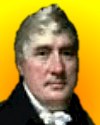
Born 7 Jun 1761; died 4 Oct 1821 at age 60.
Scottish engineer and architect who designed London Bridge. After working as a millwright with Andrew Meikle he studied at Edinburgh University (1780-83). He was employed by Boulton & Watt for five years In 1791, he moved to London and started his own engineering company. Over the next few years he became famous as a bridge-builder, including Leeds Bridge, Southwark Bridge and Waterloo Bridge. He was also designed and built docks at Hull, Liverpool, Greenock and Leith and improving the harbours and dockyards at Portsmouth, Chatham and Plymouth. His last project was London Bridge, though he died in 1821 before it was finished. The bridge was completed by his son, Sir John Rennie. more
Scottish engineer and architect who designed London Bridge. After working as a millwright with Andrew Meikle he studied at Edinburgh University (1780-83). He was employed by Boulton & Watt for five years In 1791, he moved to London and started his own engineering company. Over the next few years he became famous as a bridge-builder, including Leeds Bridge, Southwark Bridge and Waterloo Bridge. He was also designed and built docks at Hull, Liverpool, Greenock and Leith and improving the harbours and dockyards at Portsmouth, Chatham and Plymouth. His last project was London Bridge, though he died in 1821 before it was finished. The bridge was completed by his son, Sir John Rennie. more
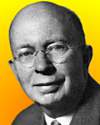
Died 7 Jun 1982 at age 90 (born 26 Nov 1891). quotes
American physicist who began his career as a research physicst with Western Electric (which became Bell Laboratories in 1925). He later became a science writer there, which continued until his retirement. His prolific writings also included critical reviews, obituaries of scientists, encyclopedia entries and four science books. At the Lowell Institute, he gave a notable series of lectures in 1935. As a speaker, he could interpret physics with clarity whether to a gathering of scientist or to wider intellectual audiences in other communities. Four universities at different times between 1929 and 1942 invited him as a visiting professor. He was the nephew of Clarence Darrow, known as the brilliant defense lawyer at the Scopes Monkey Trial.«
American physicist who began his career as a research physicst with Western Electric (which became Bell Laboratories in 1925). He later became a science writer there, which continued until his retirement. His prolific writings also included critical reviews, obituaries of scientists, encyclopedia entries and four science books. At the Lowell Institute, he gave a notable series of lectures in 1935. As a speaker, he could interpret physics with clarity whether to a gathering of scientist or to wider intellectual audiences in other communities. Four universities at different times between 1929 and 1942 invited him as a visiting professor. He was the nephew of Clarence Darrow, known as the brilliant defense lawyer at the Scopes Monkey Trial.«
The Renaissance Of Physics, by Karl Kelchner Darrow. - book suggestion.
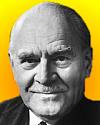
Died 7 Jun 1978 at age 80 (born 9 Nov 1897).
Ronald George Wreyford Norrish was a British chemist who shared the 1967 Nobel Prize for Chemistry with fellow Englishman Sir George Porter and German Manfred Eigen for their studies of very fast chemical reactions. From 1949-65 he collaborated with his former pupil George Porter in the development of flash photolysis and kinetic spectroscopy for the investigation of very fast reactions. Norrish also made a significant contribution to chemistry when he corrected Draper's law. In the mid-19th century John Draper proposed that the amount of photochemical change is proportional to the intensity of the light multiplied by the time for which it acts. Norrish showed that the rate was in fact proportional to the square root of the light intensity.
Ronald George Wreyford Norrish was a British chemist who shared the 1967 Nobel Prize for Chemistry with fellow Englishman Sir George Porter and German Manfred Eigen for their studies of very fast chemical reactions. From 1949-65 he collaborated with his former pupil George Porter in the development of flash photolysis and kinetic spectroscopy for the investigation of very fast reactions. Norrish also made a significant contribution to chemistry when he corrected Draper's law. In the mid-19th century John Draper proposed that the amount of photochemical change is proportional to the intensity of the light multiplied by the time for which it acts. Norrish showed that the rate was in fact proportional to the square root of the light intensity.
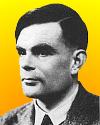
Died 7 Jun 1954 at age 41 (born 23 Jun 1912). quotes
Alan Mathison Turing was an English mathematician and logician who pioneered in the field of computer theory and who contributed important logical analyses of computer processes. He made major contributions to mathematics, cryptanalysis, logic, philosophy, and biology and to the new areas later named computer science, cognitive science, artificial intelligence, and artificial life.
Alan Mathison Turing was an English mathematician and logician who pioneered in the field of computer theory and who contributed important logical analyses of computer processes. He made major contributions to mathematics, cryptanalysis, logic, philosophy, and biology and to the new areas later named computer science, cognitive science, artificial intelligence, and artificial life.
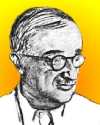
Died 7 Jun 1953 at age 61 (born 12 Sep 1891).
Hungarian-American psychoanalyst who was the first ethnologist to utilize a psychoanalytic approach to interpreting culture, especially to tribes of Australia, New Guinea, and southwestern U.S. He was also among the earliest anthropologists to work within Freudian theory, his earliest works being largely the application of Freudian theory to data gathered from readings. From 1928-30 he carried out field work with the Somali, Aranda, Lirittja, Duau, Dobu, and Yuma. In 1938, Róheim took up residence in the U.S. and shortly was in private psychoanalytical practice in New York. In 1947, he worked with the Navaho.
Hungarian-American psychoanalyst who was the first ethnologist to utilize a psychoanalytic approach to interpreting culture, especially to tribes of Australia, New Guinea, and southwestern U.S. He was also among the earliest anthropologists to work within Freudian theory, his earliest works being largely the application of Freudian theory to data gathered from readings. From 1928-30 he carried out field work with the Somali, Aranda, Lirittja, Duau, Dobu, and Yuma. In 1938, Róheim took up residence in the U.S. and shortly was in private psychoanalytical practice in New York. In 1947, he worked with the Navaho.
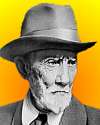

Russian horticulturist, of little education, who crossbred over 300 new types of fruit trees and berries, some able to survive the winters of Central Russia, and was praised by Soviet officials. His theory of hybridization held the fanciful the idea that acquired characteristics were inheritable. His private orchard at Koslov, became a state institution, and in 1932 the city known as Kozlov for four centuries became Michurinsk. When Mendelian genetics came under attack in the Soviet Union, Michurin's controversial theory became state doctrine. It was elaborated by Trofim D. Lysenko, a Bolshevik bureaucrat, as a uniquely communist approach to agriculture, despite the nearly universal rejection of this doctrine by the world's scientists.«[Image right: noodle squash crossbred by Michurin from bush squash and an early-ripening melon.]
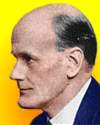
Died 7 Jun 1933 at age 59 (born 21 Jul 1873). quotes
Sir Walter Morley Fletcher was an English physiologist and administrator who began his degree studies at Trinity College, Cambridge in 1891. Upon graduation, he commenced his nearly 20-year career there, where he researched the biochemistry of muscle respiration, contraction and the role of lactic acid. Then, having gained a distinction in his field, on 1 Jul 1914, Fletcher was offered the post as the first Secretary of the Medical Research Council (originally known as the Medical Research Committee). He became an adept administrator. Fletcher emphasized funding for basic scientific research, rather than clinical research, and through his leadership for eighteen years, he established Britain as a leader in biomedical research. He also urged attention to nutritional studies for health of both humans and animals.«
Sir Walter Morley Fletcher was an English physiologist and administrator who began his degree studies at Trinity College, Cambridge in 1891. Upon graduation, he commenced his nearly 20-year career there, where he researched the biochemistry of muscle respiration, contraction and the role of lactic acid. Then, having gained a distinction in his field, on 1 Jul 1914, Fletcher was offered the post as the first Secretary of the Medical Research Council (originally known as the Medical Research Committee). He became an adept administrator. Fletcher emphasized funding for basic scientific research, rather than clinical research, and through his leadership for eighteen years, he established Britain as a leader in biomedical research. He also urged attention to nutritional studies for health of both humans and animals.«
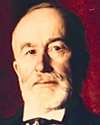
Died 7 Jun 1932 at age 95 (born 19 Jan 1837).
American physician who was the first brain surgeon in the U.S. In 1887, at St. Mary's Hospital in Philadelphia, Keen performed the first successful removal of a brain tumor in the U.S. He was the first physician to perform a decompression of the skull and also the first physician in Philadelphia to use Lister's antiseptic surgical practices. His interests included focal epilepsy and microcephaly. Keen edited Gray's anatomy in 1883 and wrote numerous articles and monographs. Keen assisted the American surgeon Joseph Bryant in removing the left upper jaw of U.S. president Grover Cleveland (1893) for a malignant tumour.
American physician who was the first brain surgeon in the U.S. In 1887, at St. Mary's Hospital in Philadelphia, Keen performed the first successful removal of a brain tumor in the U.S. He was the first physician to perform a decompression of the skull and also the first physician in Philadelphia to use Lister's antiseptic surgical practices. His interests included focal epilepsy and microcephaly. Keen edited Gray's anatomy in 1883 and wrote numerous articles and monographs. Keen assisted the American surgeon Joseph Bryant in removing the left upper jaw of U.S. president Grover Cleveland (1893) for a malignant tumour.
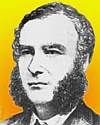
Died 7 Jun 1907 at age 77 (born 11 Jun 1829).
British zoologist and ornithologist, one of the foremost in his time. In 1866, he was appointed the first Professor of Zoology and Comparative Anatomy at Cambridge University. Despite the fact that he suffered from diseased hip joints and walked with the aid of two sticks, he traveled throughout Lapland, Iceland, the West Indies, and North America (1854-63). During these expeditions he studied ornithology and became particularly interested in the great auk. He helped prepare the first Acts of Parliament passed for the protection of birds. He wrote a great deal on his field of work, including a 4-volume Dictionary of Birds, and the articles on Ornithology in several 19th century editions of the Encyclopaedia Britannica.« more
British zoologist and ornithologist, one of the foremost in his time. In 1866, he was appointed the first Professor of Zoology and Comparative Anatomy at Cambridge University. Despite the fact that he suffered from diseased hip joints and walked with the aid of two sticks, he traveled throughout Lapland, Iceland, the West Indies, and North America (1854-63). During these expeditions he studied ornithology and became particularly interested in the great auk. He helped prepare the first Acts of Parliament passed for the protection of birds. He wrote a great deal on his field of work, including a 4-volume Dictionary of Birds, and the articles on Ornithology in several 19th century editions of the Encyclopaedia Britannica.« more
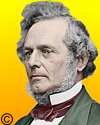

American inventor who developed and manufactured the first successful rotary printing press (1846). A cylinder rolled over stationary plates of inked type and the cylinder made an impression on paper. This eliminated the need for making impressions directly from the type plates themselves, which were heavy and difficult to manoeuvre. By constantly turning in only one direction, Hoe's revolving press increased the number of pages that could be printed per hour. more
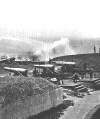
Died 7 Jun 1871 at age 55 (born 30 Jul 1815).
U.S. military inventor of perforated-cake gunpowder. Its hexagonal grains, perforated with several longitudinal holes, increased the burning surface of each grain. By burning evenly, it provided controlled rather than sudden pressure that was maintained as the projectile traveled forward, thus giving increased muzzle velocity. He also invented a system of casting cannon around a hollow core cooled from inside, resulting in a stronger barrel as concentric layers of metal cooled and shrank. His work led to casting of some of the largest cannon ever built: 20-inch muzzleloaders that fired 1,080-pound solid shot.[Image: Rodman Cannon at Fort McHenry.]
U.S. military inventor of perforated-cake gunpowder. Its hexagonal grains, perforated with several longitudinal holes, increased the burning surface of each grain. By burning evenly, it provided controlled rather than sudden pressure that was maintained as the projectile traveled forward, thus giving increased muzzle velocity. He also invented a system of casting cannon around a hollow core cooled from inside, resulting in a stronger barrel as concentric layers of metal cooled and shrank. His work led to casting of some of the largest cannon ever built: 20-inch muzzleloaders that fired 1,080-pound solid shot.[Image: Rodman Cannon at Fort McHenry.]
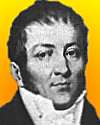
Died 7 Jun 1843 at age 75 (born 27 Jun 1767).
French astronomer who was the director of the Paris Observatory, and is noted for discovering eight comets and writing Tables astronomiques of Jupiter and Saturn (1808) and of Uranus (1821). Bouvard's tables accurately predicted orbital locations of Jupiter and Saturn, but his tables for Uranus failed, leading him to hypothesize that irregularities were caused by an unknown perturbing body. This spurred observations leading to the discovery of Neptune by Adams and Leverrier.
French astronomer who was the director of the Paris Observatory, and is noted for discovering eight comets and writing Tables astronomiques of Jupiter and Saturn (1808) and of Uranus (1821). Bouvard's tables accurately predicted orbital locations of Jupiter and Saturn, but his tables for Uranus failed, leading him to hypothesize that irregularities were caused by an unknown perturbing body. This spurred observations leading to the discovery of Neptune by Adams and Leverrier.
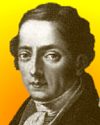
Died 7 Jun 1826 at age 39 (born 6 Mar 1787).
German physicist who was the first to study the dark lines in the solar spectrum, which were seen by Wollaston in 1802, but are called Fraunhofer lines. Fraunhofer was not able to explain them, but measured 576 lines. Over 25,000 have now been found in the solar spectrum. These are caused by selective absorption of those wavelengths by atoms of elements, and their relative positions are the same whether the light is produced by heated metals in the laboratory or seen from those gaseous elements in the sun or viewed from other heavenly bodies. Before other scientists so widely adopted the technique, he used a diffraction grating instead of a prism to disperse the spectrum. He also invented a heliometer.«
German physicist who was the first to study the dark lines in the solar spectrum, which were seen by Wollaston in 1802, but are called Fraunhofer lines. Fraunhofer was not able to explain them, but measured 576 lines. Over 25,000 have now been found in the solar spectrum. These are caused by selective absorption of those wavelengths by atoms of elements, and their relative positions are the same whether the light is produced by heated metals in the laboratory or seen from those gaseous elements in the sun or viewed from other heavenly bodies. Before other scientists so widely adopted the technique, he used a diffraction grating instead of a prism to disperse the spectrum. He also invented a heliometer.«
Spectrum of Belief: Joseph von Fraunhofer..., by Myles W. Jackson. - book suggestion.
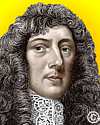
Died 7 Jun 1697 at age 71 (born 12 Mar 1626). quotes
English natural philosopher, author and biographer who is noted for rediscovering a prehistoric monument at Avebury (1649). He also drew attention to a handful of previously overlooked shallow depressions outside the perimeter of the Stonehenge stones (1663). For this the Aubrey Holes were named after him, but the later uncovering of a full circle of holes was not his work. However, he did make an accurate survey mapping the stones, and had the intuition to recognize they were of a much more ancient origin than was the common belief at the time, making him one of the founders of English archaeology. He was a founding member of the Royal Society, where he presented a “Natural History of Wiltshire” in 1675. There, he was a contemporary of Isaac Newton., Robert Hooke and Christopher Wren.. He researched a book of short biographies of eminent men.«
English natural philosopher, author and biographer who is noted for rediscovering a prehistoric monument at Avebury (1649). He also drew attention to a handful of previously overlooked shallow depressions outside the perimeter of the Stonehenge stones (1663). For this the Aubrey Holes were named after him, but the later uncovering of a full circle of holes was not his work. However, he did make an accurate survey mapping the stones, and had the intuition to recognize they were of a much more ancient origin than was the common belief at the time, making him one of the founders of English archaeology. He was a founding member of the Royal Society, where he presented a “Natural History of Wiltshire” in 1675. There, he was a contemporary of Isaac Newton., Robert Hooke and Christopher Wren.. He researched a book of short biographies of eminent men.«
John Aubrey and the Advancement of Learning, by William Poole. - book suggestion.
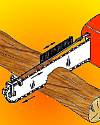
(USPTO)
In 1988, a U.S. patent was issued to 11-year-old Richard G. Woodbridge for the brush he designed to clean out sawdust accumulating in chain saw cuts to avoid sawdust build-up that otherwise can cause the chain saw to jam (No. 4,748,745). The brush is stationary, mounted on two brackets above to the chain saw blade, and is used by turning the chain saw upside down and moving the bristles through the saw cut. He was inspired by the bristles along the back of windshield snow scrapers. As the son of patent attorney Richard C. Woodbridge the boy had help in adding an optional brush agitator that would transfer vibrations from the chain to the brush to improve the sawdust removal rate.«
more

In 1980, the first U.S. government solar power plant was dedicated. It is sited in the sunny desert at Natural Bridge National Monument, Utah, and at the time the world's largest. An array of over 250,000 solar cells arranged in 12 long rows provides up to 50 kilowatts of power. The plant provides elecricity for the park's visitor center, staff residences, maintenance facilities and water sanitation system, which were otherwise 38 miles away from the nearest alternate power line. The power plant was part of a joint venture of MIT's Lincoln Laboratory and the Dept. of Energy. Huge batteries provide power at night and on cloudy days. A backup diesel generator automatically takes over if the batteries are drained too low. Its use is far less than the one the solar panels replaced, saving noise, exhaust pollution and fuel cost.«
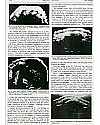
In 1958, a seminal article that launched the widespread use of ultrasound in medical diagnosis was published in The Lancet by Ian Donald, an English physician. After a few years developing the experimental use of ultrasound, Donald had applied it to treat patients in his hospital. In the Lancet article, Investigation of Abdominal Masses by Pulsed Ultrasound, he described how he was able to make the life-saving diagnosis of a huge, easily removable, ovarian cyst in a woman who had been diagnosed by others as having inoperable stomach cancer. Donald knew about sonar from his service in WW II, and industrial use of reflected ultrasound waves for flaw detection in materials, and with help from others, he launched its use in medicine.«[Image: a page from the Lancet article.]
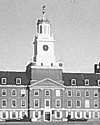
In 1954, the first laboratory built in the U.S. exclusively for studies in microbiology (second in the world) was dedicated at Rutgers University, New Brunswick, N.J. It was about ten years since the discovery of streptomycin (Jan 1944) by Selman A. Waksman, who continued as director of the new institute. The royalties for the new antibiotic received by the Rutgers Research and Endowment Foundation was more than enough to pay $3,500,000 for the new Rutgers Institute of Microbiology. In 1952, Waksman was awarded the Nobel Prize in Physiology and Medicine “for his discovery of streptomycin, the first antibiotic effective against tuberculosis.” Except for his Ph.D., Waksman was educated and spent his entire career at Rutgers. After his death, the institute was named after him, recognizing his role in making it possible.«
In 1950, a European nuclear physics laboratory, complete with cyclotron was proposed by Nobel Prize winner, Isidor I. Rabi, to UNESCO (United Nations Educational, Scientific and Cultural Organization). He represented the U.S. at the 5th General Conference, but was able to speak also with support from European scientists. The role of Unesco would be to initiate the project with a sum of about $5,000 to cover the cost of selecting the site, and to act "as a catalytic agent in obtaining the practical collaboration of scientists from various countries in the region. By 1952, the third session of its provisional Council decided to locate in Switzerland. CERN (Centre Européenne de Recherche Nucléaire) was ratified on 29 Sep 1954. «
more
History of CERN, vol I, by A. Hermann, et al. - book suggestion.
In 1914, the Alliance was the first vessel to pass through the Panama Canal.
Path Between The Seas: The Creation of the Panama Canal, by David McCullough. - book suggestion.
In 1892, Thomas A. Edison received a series of U.S. patents Nos. 476,527-32 for a “System of Electric Lighting,” an “"Incandescent Electric Lamp,” a “System of Electrical Distribution,” an “Incandescent Electric Lamp,” an “Electric-Lighting System,” and an “Ore-Screening Apparatus” respectively.
In 1892, J. F. Palmer of Chicago, Ill., was granted the first bicycle tyre patent for a self-healing cord tyre design (U.S. No. 476,680). By designing the tread portion of the tyre to operate under compression, any puncture there would tend to close rather than open. It was the B.F. Goodrich Company of Akron, Ohio that began its manufacture the same year. This patent came about one year after the first pneumatic bicycle tyre was patented in the U.S.
In 1887, Tolbert Lanston of Washington, D.C., was issued five patents (U.S. Nos. 364,521-25) for his monotype typesetting machine to cast new individual pieces of type for each character from matrices, which were then sorted for re-use. It was impractical, coming about 3 years after Ottmar Mergenthaler obtained a patent for his Linotype machine that cast solid lines of type from matrices. The first U.S. patent on any kind of typesetting machine was issued on 22 Jun 1841, to Adrien Delcambre and James Haddon Young of Lisle, France, for a machine with piano-style keys activating levers that released type to fall by gravity. The first to operate somewhat effectively was a machine patented on 15 Sep 1857.
In 1870, Thomas A. Edison was issued a patent for a “Printing Telegraph Instruments” (U.S. No. 103,924).
In 1870, Thomas S. Hall of Stamford, Conn., received a patent for the first automatic electric block railroad signal system in the U.S. (No. 103,875). When a train entered a block of track, Hall's electromagnetic device automatically set a signal when the locomotive struck a lever fastened to the rail. The signal was set to danger until the train cleared the block. After Hall invented the device in 1867, it was tried out on the New York and Harlem Railroad.
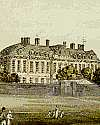
In 1753, the British Museum was founded, the world's oldest public national museum, when King George II gave his royal assent to an Act of Parliament to accept the collection of Sir Hans Sloane, a London-based physician, following his death. In his will, he had offered the British nation the collection he built over his lifetime: 71,000 objects, mostly plant and animal specimens. In return, he asked a sum of £20,000 for his heirs (which today would be more than £2,000,000). The museum opened to the public 15 Jan 1759 at Bloomsbury. Its current buildings there date from the mid-19th century. The natural history collection moved to its own museum in 1881. The British Museum set up a laboratory in 1920 for scientific study of objects.[Image: Montagu House, a 17th century mansion, first home of the British Museum.] more

